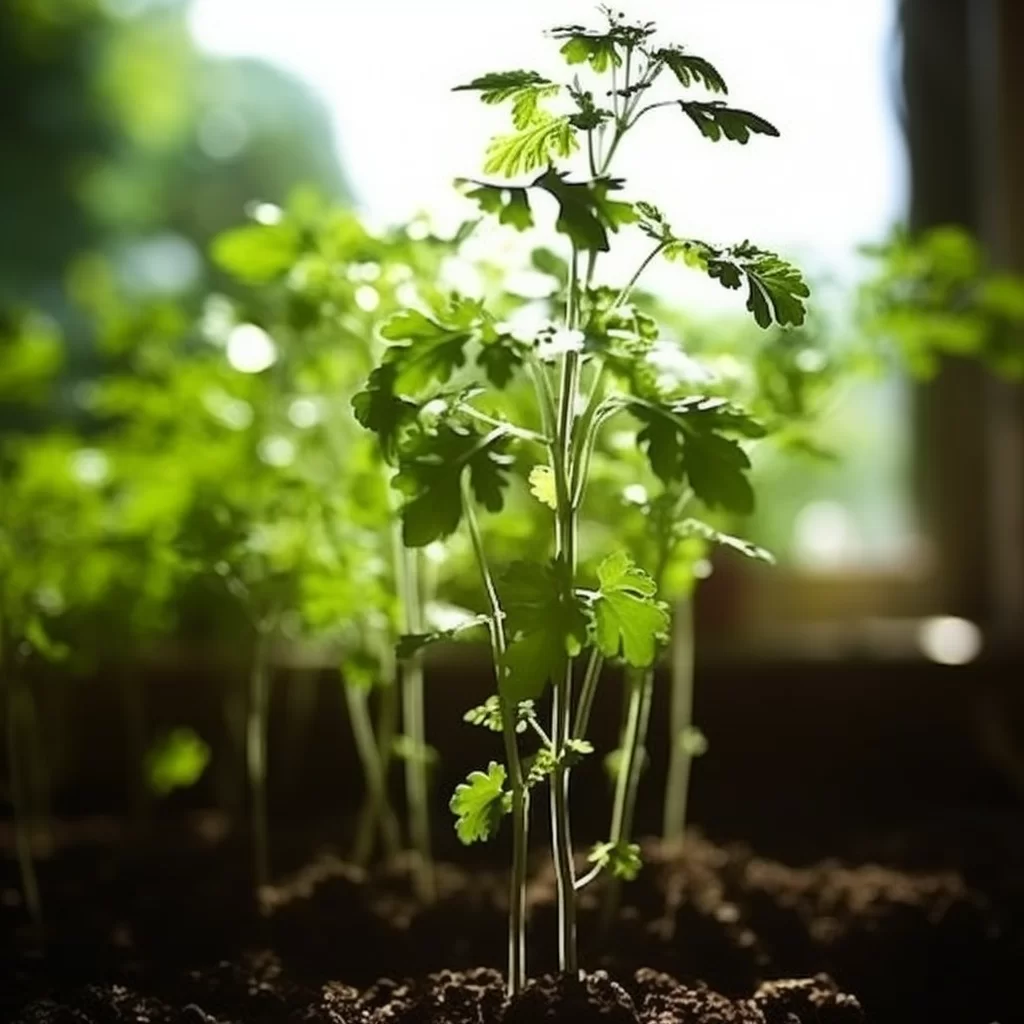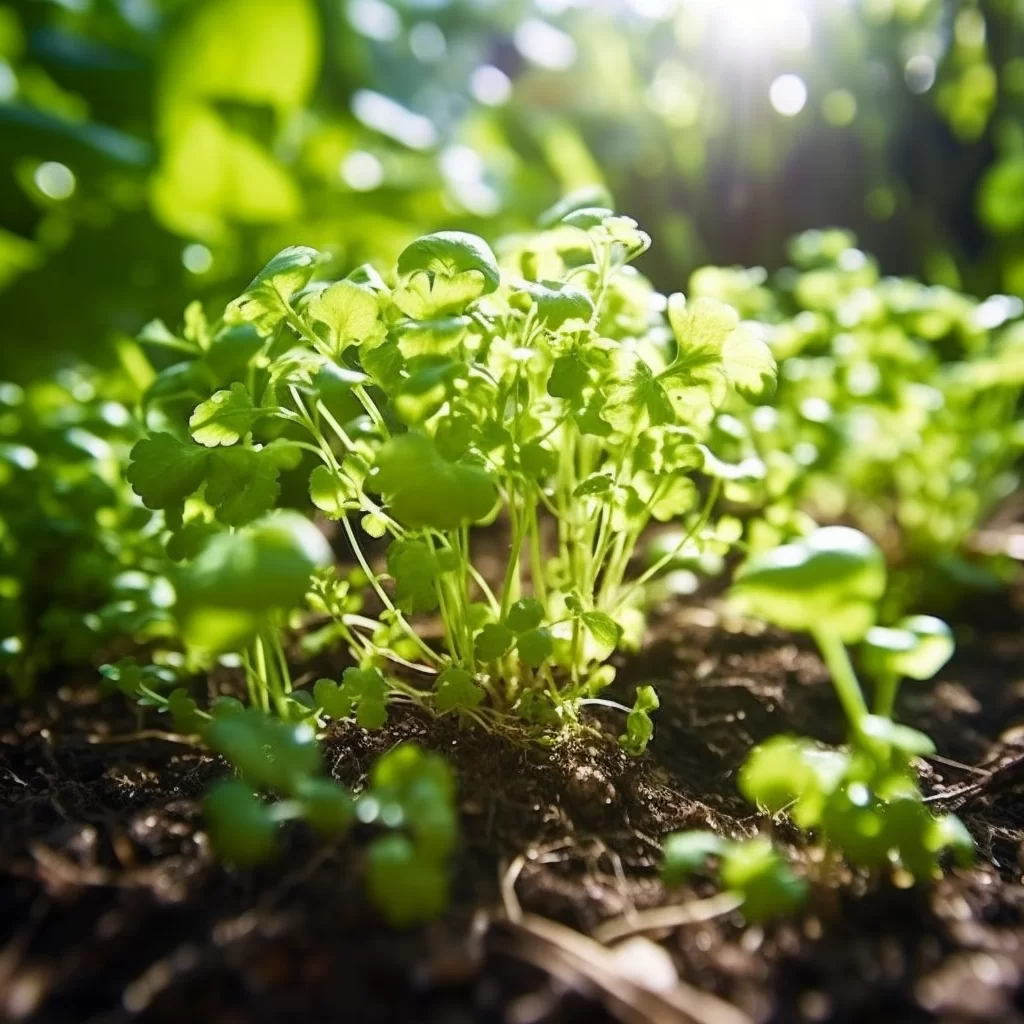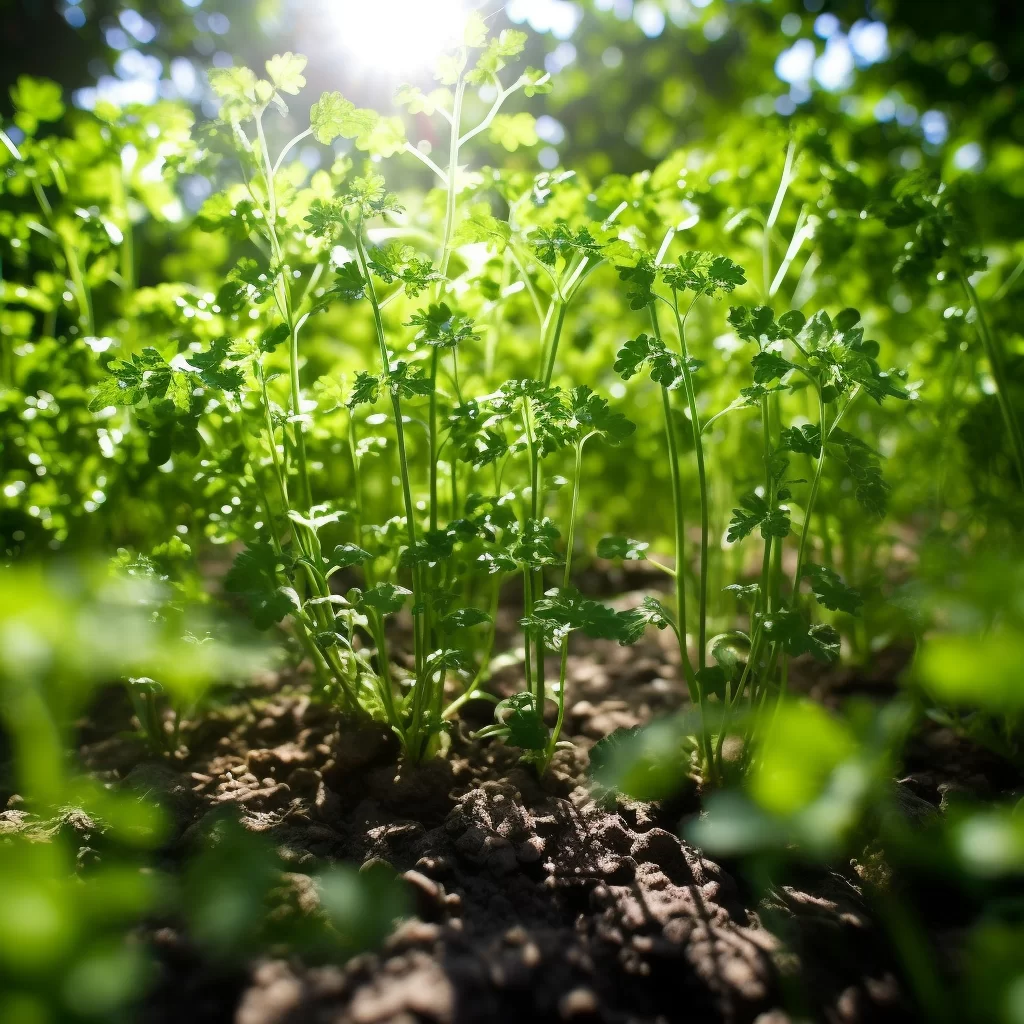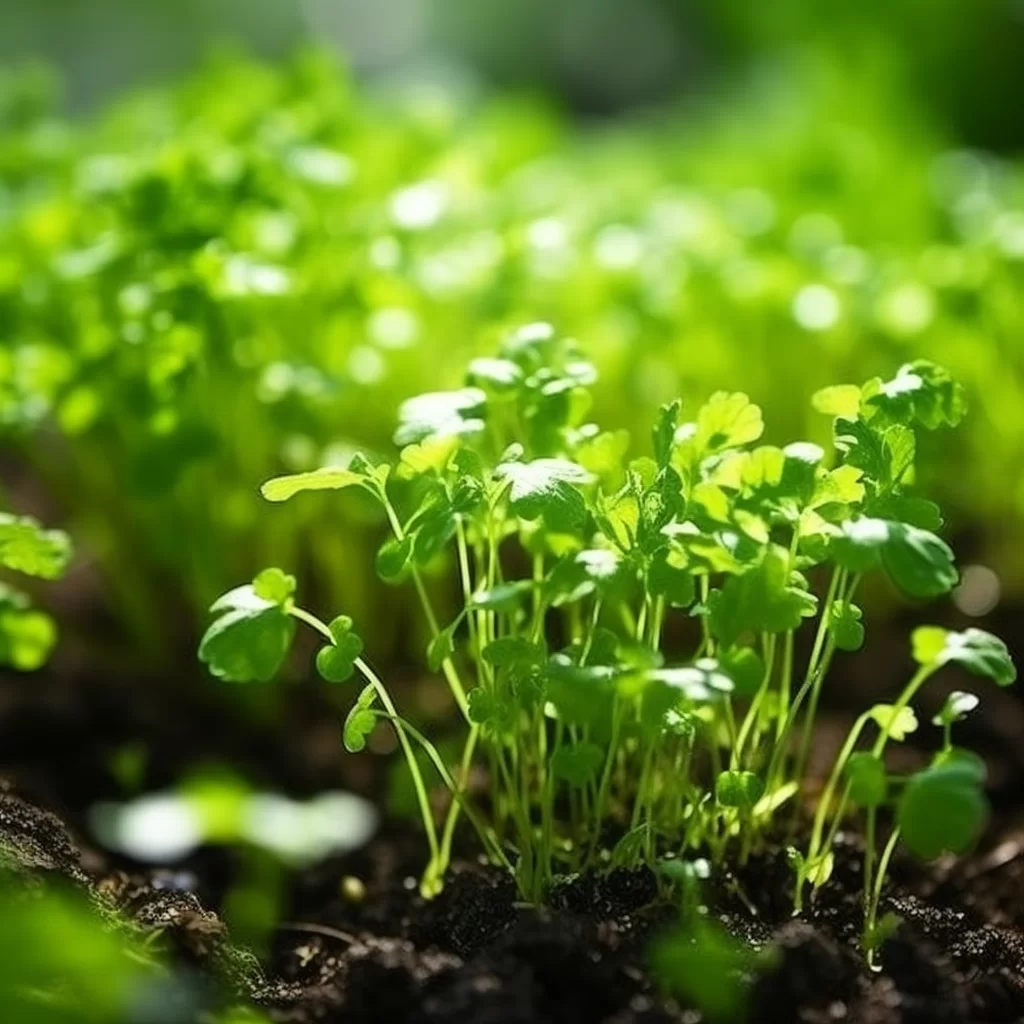Story of Day :
Contents
The Coriander Plant: A Complete Guide and Care Tips
Coriander is a herb that has become increasingly popular in recent years for its unique taste and unmistakable aroma.
While it is commonly used in cooking across various cultures, especially in Asian, Mexican, and Middle Eastern cuisines, coriander also offers numerous health benefits.
With its potent antioxidant properties and ability to help lower blood sugar levels, this herb has become an essential ingredient in herbal medicine.One of the reasons why coriander is so versatile is due to its ability to add depth of flavor to dishes.
It can be used as a garnish or as part of a spice blend that enhances the savory notes found in stews or soups.
But beyond just culinary purposes, this herb also provides several health benefits such as aiding digestion and reducing inflammation within the body.
Therefore it’s no surprise that coriander continues to be a highly sought-after ingredient for both culinary enthusiasts and health-conscious individuals alike!
What is Coriander?
Coriander is an herb that is commonly used in cooking, and it comes from the plant Coriandrum sativum.
This plant belongs to the Apiaceae family, which also includes other well-known herbs such as parsley and dill.
Interestingly, coriander has two distinct parts: the leaves are known as cilantro while the seeds are called coriander.
Although this herb originated in Southern Europe, it can now be grown in various regions of the world with moderate climates.
Many people enjoy using coriander in their dishes because of its unique flavor and aroma. Coriander is a versatile herb that can add both flavor and nutrition to your meals.
Coriander is a versatile herb that can add both flavor and nutrition to your meals.
It’s no wonder why it has been used for centuries by civilizations all over the world! This herb is popularly used fresh or dried in many cuisines worldwide for soups, stews, salads, marinades or spice blends such as curry powder.
It’s interesting to note that some people find cilantro’s taste very pungent while others love it – a phenomenon thought to be influenced by genetic differences among individuals’ taste receptors! Regardless of personal preference though, there’s no denying that coriander is a valuable addition to any kitchen pantry thanks to its long history of medicinal uses too: from aiding digestion and reducing inflammation through its rich vitamin C content!
Care Tips for Growing Coriander
If you’re a fan of fresh herbs in your cooking, growing coriander at home can be a great way to ensure that you always have access to this flavorful ingredient.
With the right techniques, it’s easy to grow coriander successfully and enjoy its benefits throughout the year.
Whether you want to use it for seasoning your meals or adding a distinctive taste to your homemade salsa, having fresh coriander on hand is a great way to elevate your culinary creations.To get started with growing coriander at home, there are several things that you need to keep in mind.
The first step is choosing the right location for planting – coriander thrives in well-draining soil with plenty of sunlight exposure.
Additionally, it’s important to water the plants regularly and ensure that they have adequate drainage so as not expose them overwatering conditions which could lead them dying off quickly.
Properly caring for your coriander plants will allow them not only look beautiful but also produce healthy herb leaves which are full of flavor and aroma making every meal an exciting experience!

- Choose the right location: Find a spot with partial shade as too much direct sunlight can cause leaf burn.
The soil should be well-draining but moist.
- Sow seeds correctly: Sow seeds directly into the soil about half an inch deep and one inch apart from each other.
Water thoroughly after planting.
- Maintain soil moisture: Keep the soil moist by watering regularly or using mulch to help retain moisture.
- Fertilize every two weeks: Use a balanced fertilizer every two weeks during active growth periods to promote healthy foliage growth and seed production.
- Pest control: Watch out for aphids, spider mites, and whiteflies.
Use organic insecticides or homemade remedies to prevent infestations.
Harvesting Coriander
Coriander is an herb that has a distinct aroma and flavor, making it a popular ingredient in many dishes.
The best time to harvest coriander is in the morning when the plant is still moist with dew.
This will help retain its freshness and flavor.
To harvest, simply cut off entire stems about one inch from the base of the plant.
It’s important to rinse thoroughly and dry using a clean cloth or paper towel to remove any dirt or debris that might have accumulated during growth.Harvesting coriander requires some care, but it’s worth it for the delicious flavor it adds to your food.
By harvesting early in the morning when moisture levels are high, you can ensure that your coriander stays fresh for longer periods of time.
Once you’ve cut off your desired amount of stems from the base of the plant, be sure to give them a thorough rinse before drying them off with a clean cloth or paper towel.
These simple steps will help you enjoy fresh-tasting coriander whenever you need it!

Culinary Uses of Coriander
Coriander is an herb that’s widely used in cooking, and it’s valued for its unique flavor profile.
It has a citrusy taste with hints of mint and spice, making it a versatile addition to many dishes.
Whether you’re using fresh coriander leaves or ground coriander powder, this herb can add depth and complexity to your meals.
You can use it as a finishing touch on top of soups, salads or curries or even incorporate into marinades for meats.There are countless ways to incorporate coriander into your cooking.
For example, you might want to try adding some fresh cilantro leaves to your guacamole or salsa for an extra burst of flavor.
Alternatively, you could experiment with using ground coriander in rubs for grilled chicken breasts or pork chops.
With its bold taste and versatility, there’s no limit to the ways that you can use this flavorful herb in your kitchen!
- As a seasoning: Add chopped cilantro leaves to soups, stews, curries, and salads for added flavor.
- In marinades: Crushed coriander seeds add depth of flavor to meat marinades.
- In spice blends: Ground coriander is an essential ingredient in Indian curry powder and Mexican chili powder.
- In drinks: Infuse water with fresh cilantro leaves for a refreshing drink that aids digestion.
 Coriander, also known as cilantro, is a popular herb used in many culinary dishes around the world.
Coriander, also known as cilantro, is a popular herb used in many culinary dishes around the world.
However, it’s not just a flavorful addition to your meal – coriander also has numerous health benefits.
Firstly, this herb is an excellent source of antioxidants that help protect your body against damage caused by free radicals.
In addition, coriander has anti-inflammatory properties that can alleviate symptoms of arthritis and joint pain.
It has been shown to lower blood sugar levels and may even have an impact on cholesterol levels in some individuals.
Moreover, coriander is rich in vitamins A and K which are essential for maintaining healthy vision and promoting strong bones.Furthermore, studies have found that coriander may also have some antimicrobial properties which could make it effective in preventing infections caused by certain bacteria or fungi.
This herb can be particularly beneficial for digestive health since it helps aid digestion by promoting the production of digestive enzymes necessary for breaking down food molecules effectively.
Additionally, due to its natural diuretic effect on the body, coriander may help flush out excess toxins from your system while helping regulate fluid balance within cells leading to efficient functioning of various organs such as kidneys or liver.
Overall, incorporating coriander into your diet can provide an array of health benefits that go beyond just adding flavor to your meals!
Not only is it a tasty addition to many recipes, but this versatile herb has also been used in herbal medicine for centuries due to its numerous health benefits.
Some of these benefits include aiding digestion, reducing inflammation, and promoting relaxation.One of the main reasons why this herb is so valued in natural medicine is because it contains compounds that can help improve digestive health.
These compounds can stimulate the production of digestive enzymes and reduce symptoms such as bloating or stomach cramps.
Additionally, this herb has anti-inflammatory properties that make it useful for treating conditions such as arthritis or skin irritation.
Finally, its relaxing properties have been shown to reduce anxiety and stress levels – making it a popular ingredient in teas or supplements designed to promote calmness and relaxation.
Overall, whether you’re adding it to your favorite recipe or using it as a natural remedy, this flavorful herb is definitely worth incorporating into your daily routine.
Coriander, also known as cilantro, is a herb that can offer several health benefits due to its rich nutritional profile.
One of the most notable benefits of coriander is its ability to aid digestion.
It contains compounds that stimulate digestive enzymes and help break down food more efficiently, which can reduce bloating caused by indigestion.
Additionally, coriander has anti-inflammatory properties that can help reduce pain and swelling in the body.
These properties are attributed to bioactive compounds present in coriander.Another significant benefit of coriander is its ability to lower cholesterol levels.
The seeds of the herb contain a compound called linalool which helps decrease bad cholesterol (LDL) while increasing good cholesterol (HDL).
This makes it an ideal herb for people looking to manage their cholesterol levels naturally.
With all these health benefits packed into one herb, it’s no wonder why coriander is a popular ingredient in many cuisines worldwide!
In Conclusion
The coriander plant is a jack-of-all-trades herb that can improve both your cooking and well-being.
Not only does it have a range of culinary applications, but it also offers numerous health benefits.
Fortunately, cultivating coriander at home requires little effort, as long as you follow some basic care guidelines.
Whether you want to enhance the taste of your favorite meals or take advantage of its healing qualities, introducing coriander into your routine is sure to result in better-tasting and healthier outcomes.Coriander’s versatility makes it an asset to any kitchen or medicine cabinet.
From spicing up curries and soups to alleviating digestive issues and inflammation, this herb has something for everyone.
Growing coriander in your garden or windowsill is easy once you know how to keep it healthy.
So why not try adding some fresh leaves or seeds to your next dish? Or brew a soothing tea with its dried leaves? The possibilities are endless when it comes to utilizing this multi-functional plant!